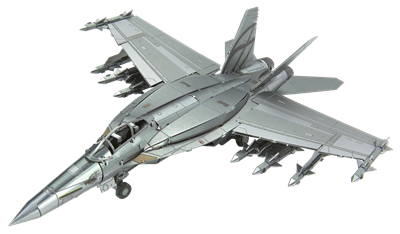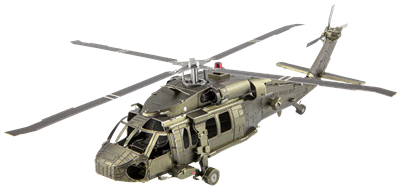Products tagged with 'air'

MMS459
F/A-18 Super Hornet™
The F/A-18 Block III Super Hornet is the newest highly capable, affordable and available tactical aircraft in U.S. Navy inventory. The Super Hornet is the backbone of the U.S. Navy carrier air wing now and for decades to come.
$0.00

MMS461
Black Hawk®
Sikorsky® UH-60 Black Hawk® Since being introduced to the Army in 1979 this medium-lift, multi-role helicopter is now used in more than 28 countries world-wide. It has fought its way in and out of countless combat zones to deliver and extract troops, save lives, provide critical supplies and perform as an aerial firefighter and border patroller.
$0.00

MMS458
F-14 Tomcat™
The supersonic F-14 Tomcat is a twin-engine, variable-sweep wing fighter aircraft. It was developed for the US Navy to counter Soviet MiG Fighter jets. The Tomcat is a two person crew consisting of a pilot in the front seat and a Radar Intercept Officer (RIO) in the back seat.
$0.00

ICX227
Space Shuttle Launch Kit
Over 15 stories tall, the external tank flanked by two booster rockets, enabled the space shuttle to escape Earth’s gravity and send it into orbit. The two booster rockets would burn 9 tons of fuel per second, at a velocity of 3000 miles per hour.
Shuttle nameplates included:
Atlantis, Discovery, Endeavor and Enterprise.
Shuttle nameplates included:
Atlantis, Discovery, Endeavor and Enterprise.
$0.00

MMS460
S-97 Raider®
The fastest next-generation helicopter in the world, the Sikorsky® S-97 Raider® features twin four-blade contra-rotating main rotors and a rear pusher propeller, allowing for a top speed of 276 MPH. What makes the Raider even more unique is its ability to turn its rear propeller on and off for ''Whisper Mode'', allowing it to sneak up on targets.
$0.00

MMS213
P-40 Warhawk
Is an American single-engine ground attack aircraft made famous in combat during World War II by the First American Volunteer Group (AVG) of the Chinese Air Force in 1941-1942, nicknamed the Flying Tigers.
While the P-40 could not match the maneuverability of the opposing Japanese fighters, it was faster in a dive, sturdy and had an excellent roll rate.
$0.00















